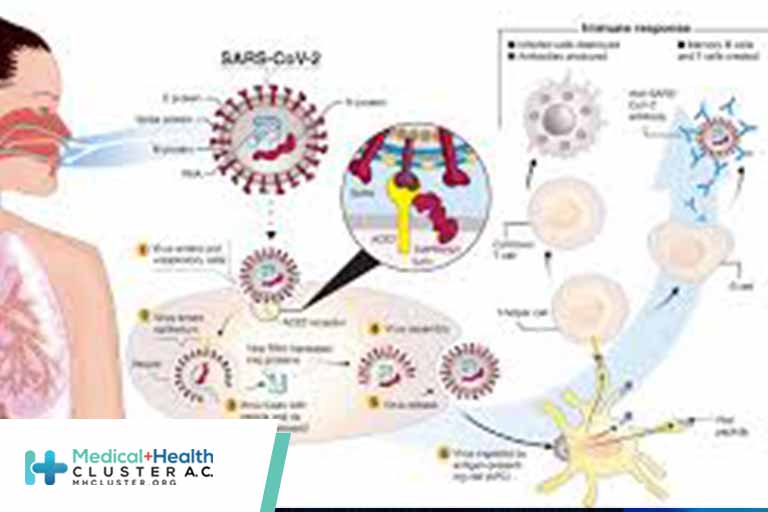En atención a la creciente preocupación sobre la confianza en...
Leer más
Severity and Incidence of Multisystem Inflammatory Syndrome in Children During 3 SARS-CoV-2 Pandemic Waves in Israel

Multisystem inflammatory syndrome in children (MIS-C) is a serious complication of SARS-CoV-2 infection.1 A previous study that described MIS-C cases in the first 3 waves of the COVID-19 pandemic found that the proportion of individuals with severe illness declined after the first wave.2 In Israel, the Omicron (B.1.1.529) variant started to spread in November 2021.3 We describe outcomes of MIS-C in a multicenter cohort and assessed incidence nationally during the Alpha, Delta, and Omicron variant waves.
To assess cardiac involvement and admission to the intensive care unit (ICU) in patients with MIS-C, a prospective study was conducted in 12 Israeli hospitals over a 16-week period of each pandemic wave. These participating institutions account for approximately 70% of the admissions to pediatric ICUs in Israel. Data of all patients with MIS-C younger than 18 years from the Alpha (December 20, 2020, to April 10, 2021), Delta (July 18, 2021, to November 13, 2021), and Omicron (November 21, 2021, to March 12, 2022) waves were prospectively collected. Vaccination status was determined by reviewing the SARS-CoV-2 digital vaccination record. The MIS-C definition was based on Centers for Disease Control and Prevention criteria.1
For purposes of incidence estimation, national data on SARS-CoV-2 infection and MIS-C were obtained from the Israel Ministry of Health SARS-CoV-2 data set and the MIS-C registry.4 The same 16-week periods for each wave were used for the MIS-C incidence estimation as for the assessment of outcomes. SARS-CoV-2 infections were confirmed using nasopharyngeal sample reverse transcriptase–polymerase chain reaction testing. Statistical analysis and calculation of incidence rate ratios (IRRs) were performed using StatsDirect statistical software, version 3.3.4 (StatsDirect Ltd). Statistical significance was defined as a 95% CI that did not include 1. The institutional review board of each participating hospital approved the study and waived the need for individual informed consent.
In the 12 participating hospitals, 171 patients with a median (IQR) age of 8 (5-12) years were diagnosed with MIS-C; 59 during the Alpha wave, 79 during the Delta wave, and 33 during the Omicron wave. Ninety-four patients (55%) were males. All patients were treated with intravenous immunoglobulins and steroids. In 5 of 79 patients (6.3%) during the Delta wave and 5 of 33 (15.1%) during the Omicron wave, a second SARS-CoV-2 vaccine dose had been administered at least 2 weeks before hospital admission. None of the vaccinated patients were admitted to the ICU or required treatment with vasopressors.
Cardiac outcomes were more favorable during the Omicron wave (Table 1). Admission to the ICU occurred in 34 participants (57.6%) during the Alpha wave, 39 (49.4%) during Delta, and 7 (21.2%) during Omicron, and median hospital length of stay was 2 days shorter during Omicron than the Alpha and Delta waves. Vasopressors were used in 22% of patients during Alpha, 17.7% during Delta, and 6.0% during Omicron, and mechanical ventilation was used in 8.5% of patients during Alpha, 8.9% during Delta, and in no patients during Omicron. One patient died during the Delta wave.
Nationwide, in persons younger than 18 years, there were 188 800 SARS-CoV-2 infections and 103 patients with MIS-C during Alpha, 233 585 SARS-CoV-2 infections and 115 patients with MIS-C during Delta, and 946 779 SARS-CoV-2 infections and 36 patients with MIS-C during Omicron. MIS-C incidences per 100 000 persons younger than 18 years were 54.5 during Alpha, 49.2 during Delta, and 3.8 during Omicron. There was a higher incidence of MIS-C among patients during the Alpha wave (IRR, 14.34 [95% CI, 9.81-20.96]) and Delta wave (IRR, 12.94 [95% CI, 8.90-18.81]) compared with the Omicron wave (Table 2).
This study suggests that MIS-C during the Omicron wave was less severe than during the Alpha or Delta waves of the COVID-19 pandemic. Possible explanations include the Omicron variant itself, previous infection with SARS-CoV-2, vaccination against SARS-CoV-2, and improvement in treatment over time. In addition, the incidence rate of MIS-C during the Omicron wave was lower than during the Delta and Alpha waves. A 2022 study from South Africa on the Omicron wave reported no cases of MIS-C, a finding that corroborates these results.5 Limitations of the study include the small number of patients in the prospective cohort and the single-country data. Because MIS-C is a late-onset phenomenon of SARS-CoV-2 infection, cases that appeared after the 16-week period of each wave were not included.
Créditos: Comité científico Covid




